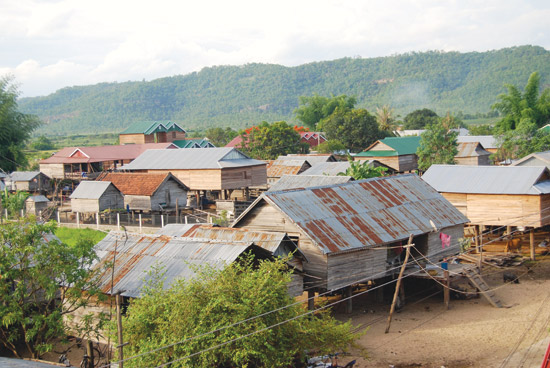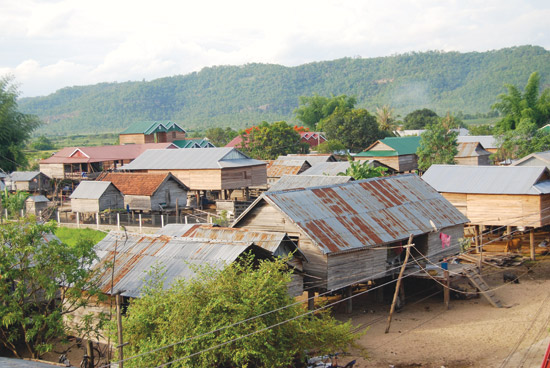(No.2, Vol.5,Mar-Apr 2015 Vietnam Heritage Magazine)
An area of ‘new long houses’ in Ka Xom Village, Po To Commune, Ia Pa Dist.

a Xom Village, Po To Commune, Ia Pa Dist.; The multiple-storey long house in L shape with Thai roof-style launching in Po To Commune, Ia Pa Dist

A new long house with a distance of 2.5 m – 3 m from the ground to the floor for keeping agricultural food and machines
It’s called ‘new long house’ because this is a variation of the traditional long houses, which are culturally, the typical dwelling place of some ethnic minorities of Tay Nguyen (and Truong Son), who still maintain a matriarchal social structure.
Improved economic conditions and extensive cultural exchange between different regions and ethnicities have almost wiped away this form of dwelling. Instead of long stilted houses, people now build houses on the ground like in the low lands. But the Gia Rai and Ba Na people in Ia Pa, Phu Thien districts and Ayunpa Township (Gia Lai province) have another idea. Instead of low, narrow thatched roof long houses built on thin poles, they use big strong poles to build spacious long houses with high ceilings, wooden walls and tile or tole roofs.
Another significant change is that instead of 9-10 families as before, the new style structures, although quite long (10-25m), house only at most three households (or kitchens, as they call it); that of the parents and the unmarried children, and those of married daughters.
As a product of economic development, the long houses of the people of Ia Pa, Phu Thien, Ayunpa, Krong Pa, Konchro districts have undergone many improvements to satisfy the modern needs of their inhabitants. Today, beside the main long house, there are auxiliary structures to form an L, T or II shape. There are also multiple-storey long houses. ‘The house must be big, beautiful, long-lasting and full of comfort…’ That’s what people think nowadays.

